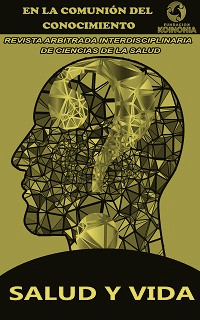Psychosocial risk factors and workplace violence in health care workers
DOI:
https://doi.org/10.35381/s.v.v7i2.3483Keywords:
Absenteeism, burnout, professional, career mobility, (Source: DeCS)Abstract
Objective: To determine the association between psychosocial risk factors and workplace violence among health personnel in the Ambato District - Ecuador. Method: Descriptive observational. Results and conclusions: 58.7% experience psychological demands due to the workload. It is determined that there are a series of psychosocial factors that significantly affect workers, both in their performance and in their mental health with the development of work stress; however, violence is a factor that is also significantly present, especially the psychological one, therefore, it shows many similarities with the findings of this study, in relation to the presence of psychological violence represented in work violence and it is related to insecurity as one of the causal factors.
Downloads
References
Galanter M, Castaneda R, Ferman J. Substance abuse among general psychiatric patients: place of presentation, diagnosis, and treatment. Am J Drug Alcohol Abuse. 1988;14(2):211-235. doi:10.3109/00952999809001548
Kessler T, Lev-Ran S. The association between comorbid psychiatric diagnoses and hospitalization-related factors among individuals with schizophrenia. Compr Psychiatry. 2019;89:7-15. doi:10.1016/j.comppsych.2018.12.004
Greenfield SF, Weiss RD, Tohen M. Substance abuse and the chronically mentally ill: a description of dual diagnosis treatment services in a psychiatric hospital. Community Ment Health J. 1995;31(3):265-277. doi:10.1007/BF02188753
Leão TS, Johansson LM, Sundquist K. Hospitalization due to alcohol and drug abuse in first- and second-generation immigrants: a follow-up study in Sweden. Subst Use Misuse. 2006;41(3):283-296. doi:10.1080/10826080500409100
Simon R, Snow R, Wakeman S. Understanding why patients with substance use disorders leave the hospital against medical advice: A qualitative study. Subst Abus. 2020;41(4):519-525. doi:10.1080/08897077.2019.1671942
Krakowski MI, Czobor P. Psychosocial risk factors associated with suicide attempts and violence among psychiatric inpatients. Psychiatr Serv. 2004;55(12):1414-1419. doi:10.1176/appi.ps.55.12.1414
Kavanaugh VM, Fierro MF, Suttle DE, Heyl PS, Bendheim SH, Powell V. Psychosocial risk factors as contributors to pregnancy-associated death in Virginia, 1999-2001. J Womens Health (Larchmt). 2009;18(7):1041-1048. doi:10.1089/jwh.2008.1037
Newcomb ME, Hill R, Buehler K, Ryan DT, Whitton SW, Mustanski B. High Burden of Mental Health Problems, Substance Use, Violence, and Related Psychosocial Factors in Transgender, Non-Binary, and Gender Diverse Youth and Young Adults. Arch Sex Behav. 2020;49(2):645-659. doi:10.1007/s10508-019-01533-9
Gebara CF, Ferri CP, Bhona FM, Vieira MT, Lourenço LM, Noto AR. Psychosocial factors associated with mother-child violence: a household survey. Soc Psychiatry Psychiatr Epidemiol. 2017;52(1):77-86. doi:10.1007/s00127-016-1298-0
Palma-Contreras A, Ansoleaga E. Asociaciones entre factores de riesgos psicosociales, dimensiones organizacionales y problemas de salud mental, relacionados con la violencia laboral, en trabajadores de tres hospitales chilenos de alta complejidad [Associations between psychosocial risk factors, organizational dimensions, and mental health problems related to workplace violence among workers of three Chilean hospitals of high complexity]. Cad Saude Publica. 2020;36(3):e00084219. doi:10.1590/0102-311X00084219
Moncada I Lluís S, Llorens Serrano C, Salas Nicás S, Moriña Soler D, Navarro Giné A. La tercera versión de COPSOQ-Istas21. Un instrumento internacional actualizado para la prevención de riesgos psicosociales en el trabajo [The third version of COPSOQ-Istas21. An updated international instrument for the workplace]. Rev Esp Salud Publica. 2021;95:e202105075. Published 2021 May 28.
Pando Moreno M, Aranda Beltrán C, Preciado Serrano L, Franco Chávez S. A, , Salazar Estrada J. G. Validez y confiabilidad del inventario de violencia y acoso psicológico en el trabajo(ivapt-pando) [Validity and reliability of the inventory of violence and psychological harassment at work (ivapt-pando)]. Enseñanza e Investigación en Psicología [Internet]. 2006;11(2):319-332. Recuperado de: https://www.redalyc.org/articulo.oa?id=29211208
Acquadro Maran D, Bernardelli S, Varetto A. Mobbing (bullying at work) in Italy: characteristics of successful court cases. J Inj Violence Res. 2018;10(1):17-24. doi:10.5249/jivr.v10i1.945
Rasool SF, Wang M, Zhang Y, Samma M. Sustainable Work Performance: The Roles of Workplace Violence and Occupational Stress. Int J Environ Res Public Health. 2020;17(3):912. doi:10.3390/ijerph17030912
Nikolić D, Višnjić A. Mobbing and Violence at Work as Hidden Stressors and Work Ability Among Emergency Medical Doctors in Serbia. Medicina (Kaunas). 2020;56(1):31. doi:10.3390/medicina56010031
Published
How to Cite
Issue
Section
License
Copyright (c) 2023 Viviana Del Rocio Ortiz-Yumiguano, Darwin Raúl Noroña-Salcedo, Vladimir Vega-Falcón, Gabriel Eduardo Cortez-Andrade

This work is licensed under a Creative Commons Attribution-NonCommercial-ShareAlike 4.0 International License.
CC BY-NC-SA : Esta licencia permite a los reutilizadores distribuir, remezclar, adaptar y construir sobre el material en cualquier medio o formato solo con fines no comerciales, y solo siempre y cuando se dé la atribución al creador. Si remezcla, adapta o construye sobre el material, debe licenciar el material modificado bajo términos idénticos.
OAI-PMH: https://fundacionkoinonia.com.ve/ojs/index.php/saludyvida/oai.









